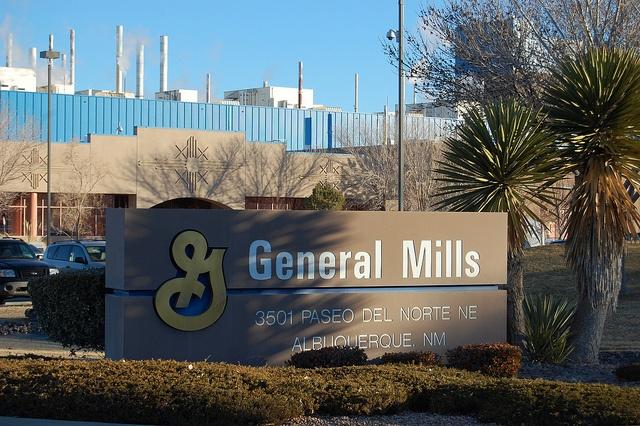
General Mills is such a large company that when it does something, good or bad, you take notice. In this case, General Mills is striving to do good for the environment by reducing its greenhouse gas emissions.
It reduced its GHG emissions rate by 23 percent last year from a 2005 baseline, surpassing its goal of a 20 percent reduction by 2015. The company also managed to cut absolute GHG emissions by 10 percent since 2005 while net sales increased by 59 percent.
Becoming more energy efficient in its operations and using less GHG-intensive forms of energy are the focus of its emissions reduction efforts, as its 45th annual Global Responsibility Report reveals. The company provided several examples. One is its Murfreesboro, Tennessee, facility where an anaerobic reactor uses self-renewing bacteria to convert the whey by-product from Greek yogurt into a biogas. It may sound unconventional, but this biogas has the potential to generate over 10 percent of the power used at the facility and reduce natural gas use by 10 percent.
Going up the value chain
Most of the GHG emissions associated with General Mills’ value chain are from entities the company doesn’t own or control. Over 60 percent of its value chain emissions come from agriculture, ingredients and packaging. So, General Mills is focusing on sustainably sourcing its 10 priority ingredients by 2020. These 'priority' ingredients include vanilla, palm oil and sugarcane, and they represent over 50 of the total ingredients the company buys.
General Mills' goal for palm oil is to source 100 percent from “responsible and sustainable sources” by 2015. It is bit behind to meet the goal as 83 percent of the palm oil purchased in 2014 was sustainably sourced. Most palm oil comes from Malaysia and Indonesia, and in both countries the palm oil sector is responsible for deforestation.
The areas where General Mills lags behind
In some environmental areas General Mills is not slated to meet its 2015 targets. One of those areas is energy use reduction. The company’s goal is to reduce its energy usage rate by 20 percent by 2020 from a 2005 baseline. Through 2014, it only managed to reduce energy usage rate by 10 percent, unchanged since 2013. It attributes the stagnation to “stronger growth in relatively high energy products, such as Greek yogurt.”
General Mills does focus on increasing energy efficiency, and if it continue to focus on it, combined with increasing renewable energy use, it will eventually reduce its energy usage rate. Case in point: Its facility in Inofita, Greece, installed nearly 800 square feet of solar panels in 2014, reducing diesel consumption related to water heating. The solar panels also decrease related GHG emissions and are projected to save about $50,000 a year. The solar energy system is also projected to pay for itself in two years.
Another area that General Mills lags behind is transportation fuels reduction. The company aimed to cut fuel usage rate by 35 percent by the end of this year, using a 2009 baseline. It has only reduced this rate by 22 percent through 2014, compared to 24 percent through 2013. The reason for the slow progress is due partly to winter storms in 2014, the company said. Since transporting products is a “significant source of GHG emissions,” General Mills needs to step it up in this area.
Still another area that General Mills lags in is water use reduction, but only by a little bit. The goal is to reduce water usage rate by 20 percent by 2015, from a 2006 baseline. The company achieved a 17 percent reduction in 2014. There are several reasons the company is lagging: high water usage in yogurt products and associated cooling systems following its Yoplait acquisition in 2012 combined with expanding its Greek yogurt business, the company said.
It will be interesting to see where General Mills is next year. Will the company achieve more progress toward its environmental goals? Stay tuned to find out.
Image credit: GeneralMills

Gina-Marie is a freelance writer and journalist armed with a degree in journalism, and a passion for social justice, including the environment and sustainability. She writes for various websites, and has made the 75+ Environmentalists to Follow list by Mashable.com.














